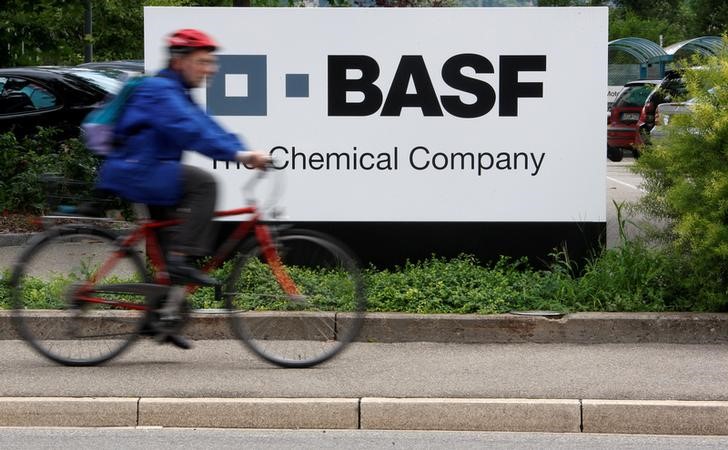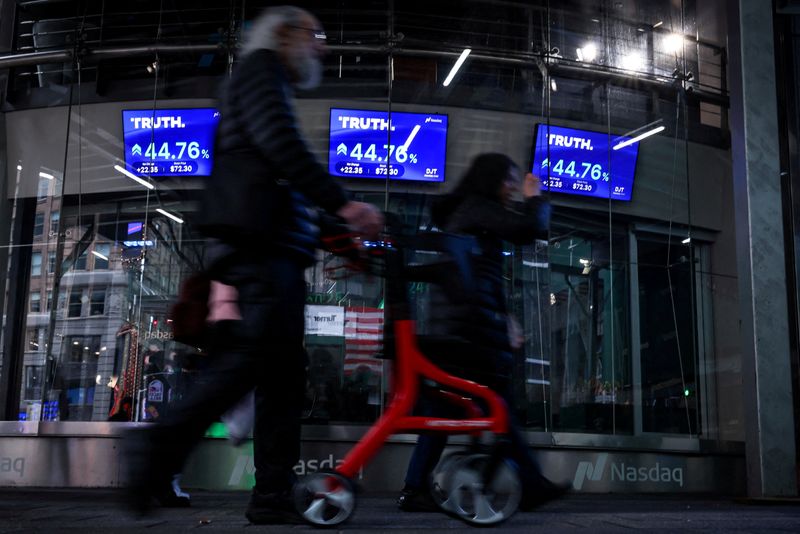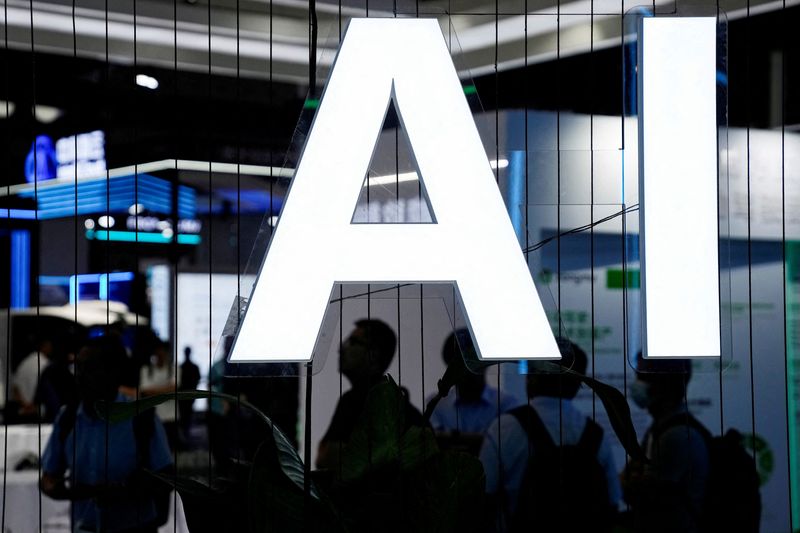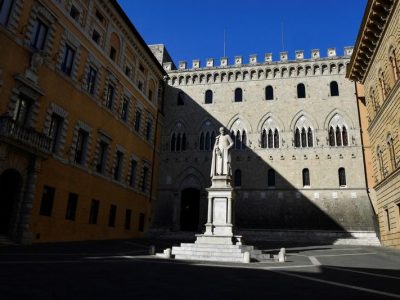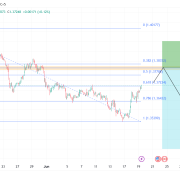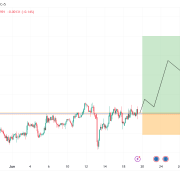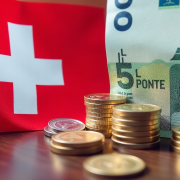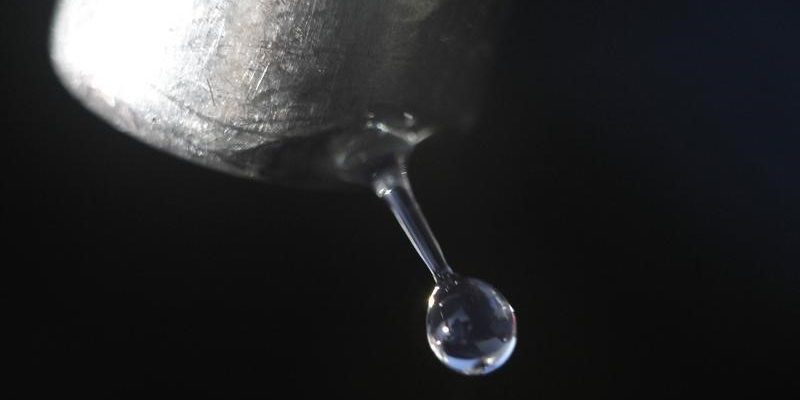
Teck Resources Limited (NYSE:TECK), a mining company, held its Third Quarter 2024 Earnings Call on October 24, 2024, announcing significant shareholder returns and a strategic shift towards energy transition metals. The company, led by CEO Jonathan Price and CFO Crystal Prystai, reported a strong financial performance with a record shareholder return of $720 million in Q3 and a reduction in debt by US$1.5 billion. Operationally, Teck achieved record copper production despite lower grade ore and completed the QB2 project, with plans to increase copper production by year-end. Financially, adjusted EBITDA more than doubled year-over-year, driven by robust copper and zinc prices.
Key Takeaways
Teck Resources has become a pure play energy transition metals firm after selling its steelmaking coal interests.
Record shareholder returns amounted to $720 million for Q3, with a year-to-date total of over $1.3 billion.
Debt was reduced by US$1.5 billion, leading to a net cash position of US$1.8 billion as of September 30, 2024.
Record copper production reached 52,500 tonnes in Q3, with plans to ramp up production by year-end.
Adjusted EBITDA and EPS significantly increased, despite an $828 million impairment charge on Trail operations.
Zinc gross profit rose to $358 million, with improved performance at Red Dog and lower net cash unit costs.
Share buybacks are expected to continue at approximately $400 million per quarter into Q4 and 2025.
Company Outlook
Teck Resources narrowed its 2024 copper production guidance to 420,000–455,000 tonnes.
The company is progressing near-term copper projects for potential sanctioning in 2025, expecting significant cash flows starting that year.
Teck remains committed to balancing growth strategy and shareholder returns with a $3.25 billion share buyback program authorized.
The company is focused on ramping up QB operations and improving profitability at Trail.
Bearish Highlights
Lower expected high-grade ore production has led to reduced copper production guidance.
Results were negatively impacted by the $828 million non-cash impairment charge on Trail operations.
Bullish Highlights
Strong copper and zinc prices drove financial performance with copper gross profit reaching $604 million.
The zinc segment saw gross profit rise to $358 million due to higher prices and improved operational performance.
Misses
Production guidance for 2025 was impacted by Q1 downtime due to preventive maintenance.
Lower production volumes are expected to lead to increased unit costs for 2025.
Q&A Highlights
CEO Jonathan Price addressed production guidance for 2025, confirming robust designed throughput at the QB site.
Price discussed potential throughput increases at the QB asset and anticipated a 25% increase contingent on ongoing studies.
CFO Crystal Prystai focused on maintaining cost guidance for the copper business despite reduced production forecasts.
Ian Anderson commented on the zinc market, predicting continued strength in zinc prices through 2025 due to a chronic shortage of concentrate.
Teck Resources Limited, transitioning into a pure play energy transition metals company, has made significant strides in its financial and operational performance during the third quarter of 2024. The company has demonstrated a strong commitment to shareholder returns and debt reduction, while also facing challenges in production guidance and operational costs. The upcoming Strategy Day and Highland Valley site visit on November 5 will provide further insights into the company’s strategic direction and operational plans.
InvestingPro Insights
Teck Resources Limited’s (TECK) recent earnings call and strategic shift towards energy transition metals align well with several key metrics and insights from InvestingPro. The company’s strong financial performance and commitment to shareholder returns are reflected in its market position and dividend history.
According to InvestingPro data, Teck Resources has a market capitalization of $24.05 billion USD, underscoring its significant presence in the mining sector. The company’s P/E ratio of 23.51 suggests that investors are willing to pay a premium for its shares, potentially due to its strategic focus on copper and other metals crucial for the energy transition.
One of the InvestingPro Tips highlights that Teck has maintained dividend payments for 15 consecutive years, which aligns with the company’s reported record shareholder returns of $720 million in Q3 2024. This consistent dividend history demonstrates Teck’s commitment to returning value to shareholders, even as it navigates the transition to a pure-play energy transition metals firm.
Another relevant InvestingPro Tip indicates that analysts predict the company will be profitable this year. This prediction is supported by the strong financial results reported in the earnings call, including the doubling of adjusted EBITDA year-over-year and the robust performance of its copper and zinc segments.
The company’s revenue growth of 5.88% over the last twelve months, as reported by InvestingPro, aligns with the operational achievements mentioned in the earnings call, such as record copper production and improved zinc segment performance.
For investors seeking a more comprehensive analysis, InvestingPro offers additional tips and metrics that could provide further insights into Teck Resources’ financial health and future prospects. Currently, there are 6 additional tips available on the InvestingPro platform, which could be valuable for those looking to delve deeper into the company’s investment potential.
Full transcript – Teck Resources Ltd Class B (TECK) Q3 2024:
Operator: Ladies and gentlemen, thank you for standing by. Welcome to Teck’s Third Quarter 2024 Earnings Release Conference Call. At this time, all participants are in a listen-only mode. Later, we will conduct a question-and-answer session. [Operator Instructions] This conference call is being recorded on Thursday, October 24, 2024. I would now like to turn the conference over to Fraser Phillips, Senior Vice President, Investor Relations and Strategic Analysis. Please go ahead.
Fraser Phillips: Thanks, Damien. Good morning, everyone, and thank you for joining us for Teck’s third quarter 2024 conference call. Please note today’s call contains forward-looking statements. Various risks and uncertainties may cause actual results to vary. Teck does not assume the obligation to update any forward-looking statements. Please refer to slide 2 for the assumptions underlying our forward-looking statements. In addition, we will reference various non-GAAP measures throughout this call. Explanations and reconciliations regarding these measures can be found in our MD&A and the latest press release on our website. Turning to the agenda on slide 3. Jonathan Price, our CEO, will begin today’s call with an overview of our third quarter results. Crystal Prystai, our CFO, will follow with additional color on the quarter, and Jonathan will conclude today’s start with closing remarks, followed by a Q&A session. With that, over to you, you, Jonathan.
Jonathan Price: Thank you Fraser, and good morning, everyone. Starting on slide 5. Our shift to a pure play energy transition metals company was marked by the close of the sale our remaining interest in the steel leading car business on July 11th. And at that time, we received US$7.3 billion of cash and announced our planned use of proceeds, including the largest tax return to shareholders in the company’s history. Through the remainder of the third quarter, we progress deployment to those proceeds as we returned $720 million to shareholders through dividends and share buybacks in the quarter and over $1.3 billion returns to shareholders year-to-date as of yesterday, reduced debt by US$1.5 billion, putting us in a net cash position of $1.8 billion as of September 30th, and retained funding for our value-accretive near-term project projects in preparation for our next phase of copper growth. We also achieved several operational highlights in the quarter. We continue to grow our copper production, and set another consecutive record quarter, copper production as QB continues to ramp up. And our operational focus resulted in higher zinc and concentrate production on Red Dog compared to the same period last year. We are now nearing the final stages of the QB ramp-up. We completed the QB2 project in the quarter and demobilize the construction workforce. Substantially, all our claims were closed out and accrued forward in our project capital guidance range of US$ 8.6 billion to US$8.8 billion. At the same time, we continue to progress our well-funded capital-efficient copper growth portfolio, moving on near-term projects towards potential sanction in 2025. Overall, we made significant progress in the delivery of our value-driven strategy. On to slide 6, we continue our focus on safety, health and sustainability leadership. We are deeply sad by an employee fatality at Antamina during container assembly in the warehouse area on July 24th. In response, the joint venture management team at Antamina, supported by the joint venture partners, including Teck, conducted a thorough investigation to identify recauses and implement any required actions and to share learnings across the industry to help prevent future incidents. Over the third quarter, our high potential incident frequency rate remained low at 0.10, which is a 33% reduction from the same period last year. We continue to progress the rollout with mental health first aid training for frontline leaders across our operations towards our targets of 50% completion by year-end and full completion by the end of next year. And earlier this month, we were recognized on the Forbes list of the world’s best employers 2024. Meaningful as it’s an employee-driven ranking of multinational companies and institutions from over 50 countries worldwide. Turning now to an update on the ramp-up of QB operations on Slide 7. Copper production at QB improved quarter-over-quarter to 52.5000 tonnes from 51.3,000 tonnes in Q2. However, production was impacted by lower grade ore mines as expected following the geotechnical issues that restricted our access to high-grade material. This degree has been consistent with prior quarters at 0.58% and based on the throughput and recovery that we achieved, our production would have been 56,000 tonnes. The localized geotechnical issue that we had identified and disclosed last quarter, there’s now been a result with controls in place and we’re continuing to advance the mine plan. We expect higher grades in the fourth quarter and going forward, normal growth variability is expected within any different period. Mill throughput rates increased quarter-over-quarter, confirming the robustness of our plant design. As you can see in the chart on the left, throughput has been ramping up steady quarter-over-quarter towards nameplate capacity and is currently near design throughput rents. We expect to achieve design throughput rates by the end of this year. We’ve also seen evidence of our ability to operate above design throughput rates. We’re working hard on mill optimization to push performance part nameplate and on our plans for debottlenecking. Recoveries also continue to improve, as shown in the chart on the right, with an increase quarter-over-quarter and increasing stability. However, our monthly copper production did decline marginally in September, primarily the result of additional planned and unplanned maintenance. We’ve proactively taken downtime and readiness for planned test work on the grinding and flotation circuits to ensure improved continuity during the test period. The test was successful, and we’ve seen improved grind size coupled with selective reagents that enhance processing of ore in the transition zone between the supergene and hypergene mineralization, which has higher clay content. As a result, we expect improved recovery going forward. We also have unplanned downtime on the thickness and pervasive failure of the mill feed conveyor, reducing our tonnes milled. Our focus remains on improving recovery and increasing online time. We expect to see progress following the completion of the test work along with minor equipment modifications to improve reliability, scheduled for the first half of 2025. This is expected to gradually improve molybdenum recovery, copper class stability and equipment reliability through the first half of 2025. Overall, as we close out the QB project and look towards completing the ramp-up of QB operations to design throughput rates, we expect to generate significant cash flows in 2025 and beyond. We have updated certain guidance targets to 2024, which is summarized on Slide 8. You can see, we’ve improved our net cash unit cost guidance range by $0.10 per pound to $0.45 to $0.55 per pound, reflecting the results of strong operational performance, repo. Portion of this reduction was driven by improved operating costs, which allowed us to also improve our total cash unit costs to date by $0.05 per pound to $0.65 to $0.75 per pound. There is no change to rental [ph] production guidance. We’ve lowered our — sorry, to refine the zinc guidance for trial operations to 240,000 to 250,000 tons due to a localized fire at one of the units in the electrolytic zinc plant in late September. We are looking at operating the other sections in a manner that would allow us to recover some of the production loss. However, this evaluation is still underway. In copper, our total production guidance range was lower and narrowed with the bottom end of the range reduced by 15,000 tons due to lower expected production from high end value. Our revised guidance is now 420,000 to 455,000 tons from 435,000 to 500,000 tons previously. Production guidance for Antamina, Carmen de Andacollo are both unchanged. QB reflecting a slower ramp-up this year, we have narrowed our QB production guidance to 200,000 to 210,000 tons for 2024 from 200,000 to 235,000 tons. Further, we’ve provided our 2025 production guidance range for QB to 240,000 to 280,000 tons from 290,000 to 310,000 tons, reflecting planned activities to improve copper recovery and equipment reliability scheduled to run through the first half of 2025. Full year production at Highland Valley is now expected to be between 97,000 to 105,000 tons from 112,000 to 125,000 tons due to the delay in accessing the higher-grade [indiscernible] pits in Q3. For Molybdenum, our production guidance is reduced to 3,000 to 4,000 tons from 4,300 to 5,500 tons, in line with the changes to our copper production guidance. We have reduced our QB molybdenum production guidance to 800 to 1,200 tons for 2024 and to 4,000 to 5,500 tons for 2025 from 1,800 to 2,400 tons and 5,000 to 6,400 tons, respectively. Despite the lower total moly production guidance, our total copper unit cost guidance is unchanged, demonstrating our focus on managing costs across our operations. Turning to Slide 9. As we continue to progress on near-term copper projects for potential sanctioning in 2025, all subject to permitting and other works. At QB, the ramp-up continues and we are progressing the work on defining near-term opportunities for optimization, debottlenecking of the existing at to achieve improved throughput and recovery. Highland Valley, our revised environmental assessment and permit a negation for the mine life extension was accepted in July, and we continue to regress through the permit process. We expect substantial completion of engineering and project execution planning in Q2 2025 and the project could be ready for a sanction decision at that time if permits are received. The joint venture of San Nicolas continues to permit application process, and it gave with garments and stakeholders is ongoing. Project sanction decision is anticipated to follow a completion of the feasibility study and receipt of necessary permits in the second half of 2025. Of course, we are closely monitoring the evolving political situation in Mexico. For [indiscernible] whilst we have received the main environmental permit required, we are being disciplined in advancing works and progressing detailed engineering. We see more clarity on construction and associated capital before we sanction the project. We continue with the construction permit application development through Q3 2025. The project could be ready for sanctioning in late 2025, following receipt of construction permits and completion of detailed engineering. We look forward to creating additional value for our shareholders through these low capital intensities, high-returning copper projects. I’ll now hand over the call to Crystal to provide further details on our third quarter results.
Crystal Prystai: Thanks, Jonathan. Good morning, everyone. Starting slide 11 with financial performance in the quarter of 2024. As Jonathan noted, we began to deploy the proceeds received from the sale of our remaining interest in steelmaking coal business, to shareholders through significant cost refers only reducing debt and strengthening our balance sheet. We returned a total of $720 million to shareholders in the quarter, including $322 million in dividends and $398 million share buyback. In total, we have returned over $1.3 billion to shareholders year-to-date as of yesterday, and we continue to execute our previously announced share buyback program of $3.25 billion. As a result of the of the completion sale of our remaining interest in the steelmaking coal business on July 1, CVR results have been presented as discontinued operations for all periods reported in our Q3 financial statements and MD&A. We have strong financial performance in the quarter with our adjusted EBITDA more than doubling and our adjusted EPS nearly quadrupled compared to the same period in the previous year, due to strong copper and zinc prices and increased sales volumes, reflecting the benefit of the ramp-up of QB operations. In Q3, we had higher finance expense and depreciation and amortization compared to the same period last year as most of the QB assets were considered available for use at the end of 2023 and depreciation starts in 2024, and we are no longer capitalizing interest on the QB2 project. Our third quarter financial results were also impacted by a non-cash after-tax impairment charge of $828 million on our trail operations. As required under IFRS, we regularly assess whether impairment indicators are present and impaired usage is required. The permanent Trail is a result of a challenging environment for treatment charges due to a global age of at concentrate continued operating losses, combined with the recent fire in the electrolytic zinc plant, which is expected to affect fourth quarter operations. Importantly, we remain committed to our Trail operations as a core part of our strategy of providing critical minerals, particularly given its strong integration with Red Dot. Trail remains an important asset in our portfolio, and we remain highly focused on improving its profitability and cash generation through a range of initiatives that are currently being deployed. Overall, excluding the impairment charge, we saw significant improvement in our financial performance in the third quarter compared with the same period last year. Slide 12 summarizes the key drivers of our financial performance in the third quarter. The increase in adjusted EBITDA in the quarter compared to the same period last year was primarily driven by strong copper zinc pricing as well as higher copper sales volumes. Operating costs increased due to the inclusion of TV operating costs this year. In Q3 last year, Q2 costs were generally included in capitalized ramp-up costs. We continue to focus on managing our controllable costs across our business. Now looking at each of our reporting segments in greater detail and starting with copper on Slide 13. Our gross profit before depreciation and amortization from our copper segment more in double compared to the same period last year to $604 million as we realize the benefit of QB ramp-up. The increase was driven by higher sales volumes, higher prices and an increase in byproduct credits and partially offset by the inclusion of QB operating costs this year. We had another consecutive record quarter of copper production with increased production across all of our operations. QB ramp-up continues to support increased quarterly copper production. Higher copper production at Antamina was driven by increased copper-only ore as expected in the mine plan as well as higher mill recoveries. Water availability at promise an oil improved, resulting in higher mill throughput and production. And while have production also increased, it was lower than expected due to delays in accessing the Lornex Pit, which has higher rates. This delay was attributable to lower hall talk availability and challenges with labor availability on the autonomous system of new haul trucks. This has been largely resolved, and we expect to process more ones ore in the fourth quarter. Our cost of sales was higher year-over-year as expected and reflects the ramp-up of QB and depreciation of its operating assets. Excluding Hub, our net cash unit costs remained the same as in Q3 last year at US$1.87 per pound. As Jonathan outlined, we have updated our annual copper production guidance to 420,000 to 455,000 tonnes from 435,000 to 500,000 tonnes. At our total molybdenum production guidance to 3,000 to 4,000 tons from 43,000 to 55,000 tons. Despite the reduction in our annual copper and molybdenum production guidance, our copper net cash unit cost guidance remains unchanged. Turning now to our segment on Slide 14. Overall, our gross profit before depreciation and amortization from our game segment was $358 million, an increase of 49% in the quarter compared to the same quarter last year, reflecting higher zinc prices and substantially higher silver and lead byproduct revenues as well as lower treatment charges. Red Dog had another very strong quarter of operating performance. Higher zinc and live production was driven by higher mill throughput, reflecting our operational focus to improve mill availability and minimize unplanned maintenance. Zinc sales volumes were strong and in line with our guidance despite difficult weather conditions. In September, we achieved a monthly record for concentrate loaded onto vessels reflecting the close integration between our operations and commercial teams. The shipping season has continued into the fourth quarter with shipments dependent upon weather conditions and we expect to complete our shipping season as planned. Our zinc net cash unit costs improved compared to the same period last year, reflecting strong operating performance, lower smelter processing charges and higher solar and likewise product credits. At Trail operations, while we did record an impairment in the third quarter, our new chipset border operated well and achieved near-record online time and throughput. However, our refining at production was impacted by the fire in the electrolytic same plant in September. Looking forward, we expect the can concentrate sales from Red Dog of 155,000 to 185,000 tonnes in the fourth quarter, reflecting the normal seasonal put. For the full year, we’ve improved our full year guidance range resets net cash unit costs by US$0.10 per pound to US$0.45 to US$0.55 per pound from US$0.55 to US$0.65 per pound. A portion of this reduction is driven by improved operating costs. As a result, we’ve also improved our zinc total cash unit cost guidance flat US$0.05 per pound to US$0.65 to US$0.75 per pound from US$0.70 to US$0.80 per pound. Our guidance for zinc and concentrate production is unchanged and our guidance for refine zinc production was lower to 240,000 to 250,000 tons from 275,000 to 290,000 tons due to the fire in electrolytic zinc plant at the Trail. Turning now to slide 15 and our resilient balance sheet. Since the close of the EVR transaction on July 11th, we’ve made significant progress in deployment of the transaction proceeds to the balance sheet and to shareholders. We’ve reduced our debt by US$1.5 billion to date, including a cash tender offer for US$1.4 billion of our outstanding term notes, repayment of US$120 million of short-term loans at Carmen de Andacollo and open market repurchases of an additional US$9 million of term notes. Overall, we strengthened our balance sheet in the third quarter, and we are in a net cash position of CAD1.8 billion as of September 30th. Our finance income increased in the quarter due to interest earned on our higher cash balance, which is currently CAD7.8 billion. The quality of our balance sheet, along with confidence in our business outlook and a focus on lowering our financing costs, resulted in us reducing the size of our sustainability linked revolving credit facility by US$1 billion last week to US$3.0 billion. In the quarter, we returned significant cash to shareholders through the payment of our regular base quarterly dividend of $0.125 per share and a supplemental dividend of $0.50 per share for a total of $322 million, and a purchase of 6.3 million Class B shares or $398 under our normal course issuer bid. We have currently returned over $1.3 billion to shareholders year-to-date, including a purchase of 13.6 million Class B shares. This builds on our strong track record of shareholder returns, which totaled over $5 billion since 2019. With our resilient balance sheet, we are strongly positioned to execute on our growth strategy and create value for our shareholders. With that, I’ll turn it back over to Jonathan.
Jonathan Price: Thanks, Crystal. To wrap up, starting with slide 17. As we shift to a pure-play energy transition metals company, we remain true to our purpose and values, guided by our capital allocation framework that balances growth with cash returns to shareholders. Our strategy is focused around four key pillars, which drive up this huge responsible growth and value creation. On slide 18, we are delivering on our strategy. Completing the sign of EVR means that we now have a portfolio that is 100% energy transition levels. We continue to focus on driving operational performance. Our copper production continues to grow. We’ve closed out the QB2 project and are progressing towards the final stages of the ramp-up of QB operations as the key driver of our near-term copper growth. And our focus on operational performance enabled a reduction in our full year guidance range for zinc net cash unit costs. We continue to balance cash returns to shareholders with our highly competitive copper growth opportunities. So far this year, we’ve returned over $1.3 billion to shareholders and deployed $302 million towards responding our portfolio of growth projects. And we significantly strengthened our resilient balance sheet in the third quarter. With the EVR sales proceeds, we’ve paid down US$1.5 billion of debt we had a net cash position of $1.8 billion as of September 30. To conclude with slide 19. As an energy transition apples company, our focus remains on creating value for our shareholders. We will drive strong operational and financial performance embedded by our focus on core excellence. And we’re putting part towards the final stages of the QB ramp-up, which should set us up for strong cash generation financial performance. We are maintaining the balance between growth and shareholder service. We continue to progress our record returns to shareholders to $3.25 billion authorized by the Board this year. And with our resilient balance sheet, we are well positioned to continue to progress our well-funded capital vision near-term copper projects for potential planting in 2022. Thank you. With that, operator, please open the line to questions.
Operator: Certainly. [Operator Instructions] Our first question is from Orest Wowkodaw with Scotiabank. Please go ahead.
Orest Wowkodaw: Hi. Good morning. Question on QB2. So second consecutive quarter of guidance cuts here for 2024. You’ve now cut 2025 by 12%. I mean at this point, what — can you share what gives you any confidence that these numbers are achievable in 2025 just given all the cuts we’ve seen this year? And I’m curious also what you’re anticipating in terms of that guidance range for 2025, how much of that improvement over 2024 is driven by throughput versus grades versus recoveries?
Jonathan Price: Good morning, Orest. Thanks for the question. So just to start there with a bit of context around 2024 and then the reduction to guidance, and then I’ll go on to your question around 2025. As I said, the designed at QB is robust, and we have continued to make very good progress on mill throughput. And you can see that improvement quarter-over-quarter. We do expect to be operating at design of throughput rates by the end of 2024. The key for us here is to ensure that we achieve these design rates more consistently through maximizing our online time. On recovery, we expected some challenges in Q3 as we worked through higher amounts of plays in those transitionals between supergene and hypogene. Despite that, we did make some progress through higher recovery rates quarter-over-quarter. And as I mentioned, we have completed testing of dosage and reagent mixes, which have shown both improved recoveries and better stability in the plant, will be ongoing in that regard, both through the fourth quarter of this year, and in 2025. The other component, of course, aside from throughput and recovery in grade, and we’re seeing a good level of accuracy in the grade of material we mine versus what we expect in our plans. We have expected lower growth in Q3, as we said, and we do expect an improvement in grade into Q4, and as I mentioned, if all else have been equal, think if we have the same grade in Q3 as we had in Q1 and Q2 and we operate it with the throughput and recoveries that we did in the third quarter, we would have produced 56,000 tonnes than 52,000 tonnes. So growing being there is the big driver of lower production in Q3 relative to expectations. Also important to note because we discussed this in the last quarter that the geotechnical issue that we encountered is under control, and it gives us confidence to re-work the mine plan. So, we’re happy with the progress we’re making on throughput recoveries, are very much a work in progress with test we’re continuing to advance. And that fee extending to 2025. In 2025, some of the work that we’re planning to do around recovery around dosing, but also some of the work that has to be done on the plant will go through the first half of 2025. So, — that will involve some additional downtime in 2025 to drive those improvements in the first half. But we do expect that to translate into a much stronger and more consistent recovery performance through the balance of the year. The throughput, we are very encouraged by that. We do see periods where we’re operating above nameplate and as I mentioned, that’s all about driving more consistency in the uptime and on line time associated with the plant — and again, there are some modifications that will be made to areas of the plant through the back end of this year, but also through the first half of 2025. So, we’ve looked very hard at all the operational performance drivers here, we believe that the 2025 guidance that we put forward here is very much achievable. But you’ll note in the range that we’ve put around that with the $240 million to $280 million is relatively broad, and that’s to reflect some level of ongoing uncertainty associated with an asset that is still in the ramp-up phase.
Orest Wowkodaw: Just as a follow-up, in your presentation slide, Page 7, you show design recoveries of 86% to 92%. Is that a revised life of mine assumption? Or do you still think you can get to 92% on a consistent basis?
Jonathan Price: Yes, there’s no revision there, Orest. That has been designed and we still think that’s achievable here. I’ll hand over to Shehzad to talk about that in just a moment. But to say as we benchmark the performance of the ramp-up of QB against other major ramp-ups that have occurred, we are bang in line with the ramp-up territory when it comes to throughput. Recovery is the area where, as I mentioned, we have more work to do. But even so, we’re not encountering some of the recovering issues that some of the major projects have been counted over time. So, again, that’s what gives us the confidence to continue to push higher. And I’ll hand over to our Chief Operating Officer, Shehzad, is a to give a bit more color on recovery specifically because that’s a very important point.
Shehzad Bharmal: Thanks Jonathan. So, we have achieved pretty decent recoveries when we — with our typical ore types, but have struggled with some of the transition orders which have the higher place. And I think our performance has been 83% to 84% over the last quarters, and we are seeing better numbers now. But the most important part is as we introduced the more circuit as well, that had some impact as well. And test work that Jonathan mentioned has given us a good resolution on what reagents to use, and that is being implemented here in late October and November. And we will then fine-tune that well into the first half of 2025. And the range that you mentioned of $86 million to $92 million, it depends on what types are being fit. And we do expect some transition ores well into the first half of 2025. So, we won’t get to those numbers of 92% in the first half and hence, some of the impacts on the 2025 guidance. And of course, 86% to 92% over a longer-term period, not in any quarter or any year over the life of mine. So you’ll see variability of that as well.
Orest Wowkodaw: Thank you.
Operator: The next question is from Bryce Adams with CIBC. Please go ahead.
Bryce Adams: Thanks, all. Appreciate the presentation. I wanted to ask on San Nicolas in open pit mining in Mexico. Jonathan, I think you mentioned in the comments that you’re monitoring the situation. Is there anything that you can add to that? Recently, it looks like the tone has shifted towards being more positive. Would you agree with that? And could the asset be reconsidered as an underground operation. Is that something that’s been evaluated?
Jonathan Price: Bryce, thanks very much for the question. As mentioned, we are still monitoring the situation in Mexico. I think it’s fair to say there’s still a level of uncertainty there, but I would agree with your assertion that the tone has moved to a slightly more positive position for alternatively a slightly less negative position, depending on how you look at — we’ve done a lot of work on what is the optimal path for development of this asset. I think your question is geared around trying to avoid the open cut the open cut issue, we still think that mine is going to deliver the best returns associated with our assets. We continue on the permitting process on that basis, and we continue on our feasibility study in engineered with on that basis. And we are hopeful of a resolution for open cut mining, particularly in the context of San Nicolas due course. But I think we have to be realistic and not that there is uncertainty in regards to that still in the environment today.
Bryce Adams: Okay. That’s all for me. Appreciate that. And then the extra color on few details in the last few minutes. Thank you.
Jonathan Price: Thanks, Bryce.
Operator: The next question is from Carlos De Alba with Morgan Stanley. Please go ahead.
Carlos De Alba: Yes. Thank you very much. Good morning. Two questions. One on San Nicolas and another QB. San Nicolas, maybe just a follow-up, Jonathan, can you remind us if you already have a open pit mining concession for the project? Or do you have only an exploration license? What exactly do you have yesterday one of the biggest local corporate producers mentioned that for one of their projects, they are not worried about any changes in the legislation because they already have concession. So I just wanted to understand exactly what do you have?
Jonathan Price: Yes, we believe that we do have protection under the concession that we have costs associated with San Nicolas, whether or not through this consideration around the future of open cut mining, that converts into a permit to development is really the open question at present. So the extent to which there is a grandfathering of those prior rights into the current situation is something we still have to work our way through good engagement by the San Nicolas JV and then also both partners, ourselves and Agnico Eagle (NYSE:AEM) with the Mexican authorities as we try to figure out the appropriate path forward for projects.
Carlos De Alba: All right. That may sort of sense. And then on QB, how much — how many days in September was the operation down for the maintenance that you mentioned in the release was taken. And I think I heard you mentioned that in the first half of next year, there’s going to be also some downtime. Can you maybe provide a little bit more color what month do you have a sense of how many days in those months, the operation will be down?
Jonathan Price: Yes. I’ll pass you to Shehzad on that. As you know, we’ve had a cadence of major shutdowns, if you like, every quarter. And then in addition to that, there been some additional more opportunistic shutdowns that we’ve taken on specific areas of plant equipment. So Shehzad, if maybe you can comment on September and then broadly speaking on next year.
Shehzad Bharmal: Carlos, in September, we took an extra three days to do some of the work of belt changes and some of the minor changes that we needed to do ahead of the test work. And then also, as Jonathan mentioned, the technical issues that we had, where the mills were down, but they running at limited rates because of water issues, recovery from the tiers. So — it’s not just a matter of downtime. It’s some of the limitations as well, those issues have been resolved. The thickners and we continue to address issues as an example on we found that a funnel on our mills weren’t having the lives that we were expecting. So we went around, change the design, change the material and those have been installed. Some of our belting itself did not last, so we changed the material and the design of that to get. So these are the types of things that you encounter in a startup that we are addressing. And the Q1 downtime, the extra downtime really is to address several other items that we have identified, just to increase the design life of those components of the equipment. So no fatal flaw at all. It’s just a matter of including the reliability of some of the components — so the Q1 numbers are a few percentage points below our target on availability and then start in Q2 as well, that forms the guidance for 2025.
Carlos De Alba: Okay. Thank you very much. I’ll follow-up with more questions later. Thank you.
Jonathan Price: Thanks, Carlos.
Operator: Next question is from Chris LaFemina with Jefferies. Please go ahead.
Chris LaFemina: Thanks, operator. Hi, it’s Chris LaFemina. Thank you all for taking my question. And thanks for the additional insights so far in the Q&A. Just had some follow-up on the QB ramp and how we should think about incremental costs and how that’s going to flow through the P&L and the cash flow statement in 2025. So I think, Jonathan, you said that project CapEx is basically done. But with production guidance to for 2025 being lower, you talked about all the additional work that you need to do to get to full capacity. When I hear work in mining, I think costs. So how do we think about the kind of the cost impact in 2025, and just also wanted to confirm, is project CapEx now done? Or is everything just kind of flowing through kind of asset-level based operating expenses and CapEx? Or am I correct in you saying that earlier? Thank you.
Jonathan Price: Thanks for the question there, Chris. So for the first part, yes, the project CapEx is done like US 8.6 to 8.8. We’ve fallen in that range and as said, there are some claims outstanding, but they’ve been accrued for and are captured in that range. So — and we fully demobilize. So we consider the project to be done and in the rearview mirror, to your point on some of the works we’re talking about doing next year, I mean these things are minor in the scheme of things and so small you’re unlikely to see in the tool going up in our costs. This is essentially – it’s a form of preventive maintenance or minor improvement work that we’ll be doing around the site. So we don’t see that as any significant additional capital or cost burn. And to your final point, yes, essentially with the project closed, all of these expenditures now will run through the operation, of course, where there’s capital being spent on sustaining work, those things will be capitalized, but other operating costs in the normal course will run through P&L. Crystal, if there’s anything you want to add to that?
Crystal Prystai: No. I think the only thing, I guess, I would say is we’ve reiterated our cost guidance for the copper business as well as for QB for 2024 despite seeing some reduction in our production guidance, I think that just really reiterates the point about our focus on cost, and we’re working to demobilize contractors, and we’ve seen some success in that as well.
Chris LaFemina: Right. So the 2025 reduction in production will be associated with an increase in costs. So we should expect, all else equal, unit cost that QB will be higher for 2025 because your volumes are lower. The very at least there was that additional kind of cost headwind, is that correct?
Jonathan Price: Yeah. Well, we haven’t guided it yet, Chris for 2025. Obviously, if you assume that operating costs are the same and you apply a lower production cost of that, then all else being equal to get a higher operating cost, of course, but we need to assess what those costs are for next year will go through in a due course.
Chris LaFemina: And I guess the key Jonathan, like you said, I mean, it’s not like there’s a lot of additional CapEx as a matter of ramping the thing up and the operating cost might be a bit higher in the first half of the year, but there’s nothing else that we have to really worry about. I guess, the second — the follow-up to that is you’ve talked in test about waiting until 2025 before sanctioning your projects. And I think part of the reason for that was we wanted to get QB2 up to full capacity. So to the extent that this is being delayed in terms of the ramp, does that push back timing on kind of sanctioning other projects? Or is it still possible to see some of those sanction projects come through in the second half of next year? Thank you.
Jonathan Price: Let me come to that in a second, Chris. Just – Crystal, is there anything else you wanted to say on the unit cost piece just to close that out?
Crystal Prystai: Yeah. I mean, Chris, just to really confirm we haven’t put out our guidance for unit cost for 2025, I would expect them to be lower than 2024, because we had — obviously, factors with the ramp-up with using alternative shipping arrangements. We’ve had lower moly production, which has an impact on our net cash unit cost because we don’t get the moly credit. So those things we should see those resolved in 2025, and we’ll put out our guidance as we normally do in January as Jonathan said.
Jonathan Price: Thanks Crystal. On the project sanction, the remaining work we have to do on QB as Shehzad mentioned is very much in the first half of next year as we look to optimize conditions of circuit reagents for better online time and improved recoveries. They are the two things we’re focused on. We expect to have those start in the first half. Even if we achieve all of the permits on the timeline we’re working to and things on studies and have positive — with the capital costs of these projects, we wouldn’t be sanctioning anything before the second half of next year in any event. So we remain confident in the full ramp-up of QB in H1, and we’ll look at other projects. And I’m talking about greenfield progress growing in the second half of the year. HVC Mine Life Extension being a brand field, of course, is one that we will pursue as quickly as possible. But again, I think that runs into the business may here.
Chris LaFemina: Great. Thanks, again. Good luck.
Jonathan Price: Thanks, Chris.
Operator: The next question is from Liam Fitzpatrick with Deutsche Bank. Please go ahead.
Liam Fitzpatrick: Good morning, Jonathan. First one, just on production guidance. I wanted to clarify whether the update today — updates for your other assets in terms of 2025 guidance? Or will we be getting further revisions to those in November or January?
Jonathan Price: Yes. So the — the only update we’ve made for 2025 are ones we’ve communicated today. And of course, that just relates to QB, where for the issues we’ve identified. We understood clearly today that there would be a change to prior guidance for next year. All other assets as we work through the planning process and our associated guidance will be updated in the quarter of January.
Liam Fitzpatrick: And then on the growth strategy, I mean you’re clearly not alone in terms of the challenges in building and ramping up copper assets. Are you still convinced that going ahead with other greenfields further down the line is the right strategy for tech?
Jonathan Price: We are at Liam a number of reasons. I mean, firstly, the projects that we have in the pipeline ahead of us are significantly smaller in scale, scope and have much lower complexity than the Q3. So we’re also doing significantly more work around de-risking projects prior to sanction in the year in terms of the level of engineering that we’ll be undertaking, for example, which will give us greater certainty to capital spend schedule and execution pathways. And we believe that the low capital — relatively low capital intensity of these greenfield projects will offer very good returns to watch analyst. And to us, it certainly looks like a more attractive strategy than M&A, where a great deal of those the upside can be paid away through premiums to acquire assets. So we do think it’s the right strategy. Of course, through going through something like QB in terms of the major construction and development effort there. And then the ramp-up process that that we’re working through here, we take significant learning’s from that and build enormous organizational capability we can take forward on future projects. So Liam, we do think it’s the right way forward. These projects are not simple. They never are, but we’re working very hard on building the capability, capacity, system processes inside the organization to underwrite success with future project development.
Liam Fitzpatrick: Thank you. And my last quick one, if I may. Just on working capital. So there was a reasonably big build in Q3, about $0.5 billion. Any color on or guidance on how and when that will unwind in the course?
Jonathan Price: Yes. Thanks, Liam. Well, I mean along with that some of that let relates to QB. So I’ll pass over to Ian Anderson, our Chief Commercial Officer, who can explain a little bit about the production versus sales profile that we’ve seen in the operation.
Ian Anderson: Yeah. Thank you very much for question, Liam. I may be important just to say at the beginning that, of course, sales and production don’t always match and that could occur for a variety of reasons, including cutoffs for the reporting period. In system and in-transit inventory, vessel scheduling, loading windows, things like that. So, for example, we currently have just a couple of holes of cargo at the port. Those are scheduled to load imminently and there’s really no excess inventory there. In terms of the working capital question, though, the difference that you see in the disclosure is attributable to material that’s at the mine and they built up through the transition, claim materials challenge that we referred to in disclosure. So, this material is being transferred now to filtration plants into the port and we’ll go out for loading and for sales. And we expect a good portion of that to occur in Q4 and the remainder expected in Q1. So, on that basis, the volumes were reconciled over time, but important just to come back to the fact that, of course, sales and production will last.
Crystal Prystai: And then I’m sorry, I’d just add in relation to timing of sales, we did have very strong bulk copper and zinc sales in the month of September. And so you see some of that built into the ARR, which will be closed in a normal course as we go through the rest of — into Q4.
Liam Fitzpatrick: Okay. Thank you.
Jonathan Price: Thanks Liam.
Operator: The next question is from Myles Allsop with UBS. Please go ahead.
Myles Allsop: Yes, thanks for the opportunity. So, first of all, maybe on the buyback. Could you just give us a sense, are you maxing out with the buyback during Q3, should we assume that a similar rate can be achieved in Q4 and during 2025, around $400 million a quarter?
Jonathan Price: I’d just say on that, Myles, we’re not maxed that. We are being value-driven in the way we execute against that buyback. So, at lower share prices, we’re buying back more shares in a higher share prices with we’re buying back less. There’s nothing at all to indicate that we can’t continue running at the same rate in Q4 that we get in Q3, in fact, would be somewhat accelerated because in July due to a blackout period, we weren’t buying back shares. So, we would expect, again, all else being even to buy back more shares in Q4 than we did in Q3.
Myles Allsop: Okay. That makes sense. And then just going back to QB, I’m sorry, it’s obviously the key question. Obviously, you’ve talked a bit about optimization and debottlenecking, which is not in the guidance, but some of that upside medium term. When will we get more clarity on this? When will you start building it into guidance? Is this going to be end of next year once you hit steady state or — how should we think about that? Should we start factoring in throughput above 143,000 tons a day? Or should we just stick at 143,000 given the track record over recent quarters?
Jonathan Price: Yes. Good question, Myles. I mean, first off, I’ll say that at our Investor Day a couple of weeks from now, we’ll talk about this path forward for the QB asset in some more detail. I think for the time being, best to stick with the nameplate capacity because our focus is on proving that consistently by getting the online time where it needs to be. We have communicated that we think there is an opportunity to optimize above that. And then we talked about that optimization being up to 10% increase in throughput, which can be accommodated by our existing permits. Beyond that, any detail upside in the plant will really come through more debottlenecking approach, which would require some minor modifications and upgrading to certain plant and equipment. And that could potentially deliver another 15% of upside in terms of throughput. But the studies associated with that work are underway we expect to have a much better line of sight into the path forward by the end of year, but we will communicate more information and talk about this in some more detail in a couple of weeks’ time in the Investor Day.
Myles Allsop: Okay. Thanks.
Operator: The next question is from Lucas Pipes with B. Riley Securities. Please go ahead.
Lucas Pipes: Thank you very much, operator. Thank you very much for taking my question. And Jonathan, when you have your site to at Highland Valley on November 5 and still have labor needs, I might be tempted to fill out job applications. So please remind me of that. But all joking aside, I wanted to touch on Trail for a moment. You mentioned a range of initiatives that you’re looking at to improve the operational stability at that asset? What will it take CapEx-wise time-wise to improve the performance there? Thank you.
Jonathan Price: We were just singling and processing your job application area, we missed the asset you were referring to. Could you just repeat that, please?
Lucas Pipes: That is a Trail.
Jonathan Price: Trail. Okay, thank you for that. Yes, we are — we’ve seen a recent improvement in performance of the Trail. Absolutely, we brought the KIVCET boiler back online, that’s performing very well, and we are looking at cost reduction approaches there to further improve. But I’ll just get Shehzad to give you a little bit more color on some of the work that we’re doing it for.
Shehzad Bharmal: So Lucas, we’ve made some recent leadership changes there as well and with a renewed focus on cash generation, as Crystal mentioned earlier – as in product margins and costs reductions and particularly in the maintenance and non-routine work area. We are going through a lot of metallurgical work as well in order to improve recoveries from the residues and with real good success right now. And that will help us to be able to take different feeds while maintaining the margins from those fleets with improved recoveries. And of course, coupled that with a strong focus on cost reductions to get us back to profitability.
Lucas Pipes: Thank you. And CapEx-wise, any ballpark figures to think about?
Shehzad Bharmal: No major CapEx associated with these changes.
Lucas Pipes: Thank you very much for that. And I wanted to touch on the balance sheet really quickly. Crystal, can you remind us how much more you’re looking to allocate towards capital returns? How much more are you looking to allocate towards debt reduction from here going forward? And just kind of bigger picture, what do you think do you need in terms of cash to run the business and also be prepared for growth? So if you could comment on that, I would appreciate the color. Thank you.
Crystal Prystai: Yes. No problem. Thanks, Lucas. I think in terms of — maybe I’ll start with the debt reduction piece of. When we announced the use of proceeds, we had allocated US$2 billion to that. And to date, we’ve completed over US$1.5 billion with the combination of the buyback of our notes as well as the reduction in the CBA short-term loans. So I think we have around maybe US$400 million remaining earmarked for debt reduction. And we’re continuing to review how we may deploy that. The options obviously relate to the project financing for QB as well as some leasing that we have on the balance sheet. So we’re exploring those. I think they will take a little bit more time for us to execute because we obviously have partners and things to resolve in that regard. And then in terms of the shareholder return, so we’ve — obviously, we paid the supplemental dividend, the $0.50 a share in September. The Board had authorized $3.25 billion of buybacks, if you also include the $500 million from earlier in the year. Through yesterday, we had executed $882 million of that. So we’ll have the remainder to execute. I think it will take us sort of 12 to 18 months longer to complete that. And as Jonathan noted, that will depend on, obviously, the price of our shares and with consideration of value. So that’s on the buyback. And then in terms of the growth projects, we had — when we issued the use of proceeds again, we had disclosed a range of capital for those projects, and that’s in our order from July. And we’re continuing to review those CapEx numbers and assess those as we go through the detailed engineering work and conclude the studies. And so we’ll provide updates in due course as needed. But I think you can refer back I don’t have the number at hand, but I — so 2.6% to 4.3%. You can double check in July and please confirm with you offline, but — so that’s in regard to growth, and we hear our proceeds for that, and we’re holding it as cash. We expect QB to generate significant cash flow as we get up to the full production into 2025. And we as per our capital allocation framework, if we generate cash in excess of our needs, we would return that to shareholders and our capital allocation framework enables us to do that with that minimum 30% of available cash returns return to shareholders. So that’s generally how we think about it. And if you have, I guess, follow-up questions, happy to take that.
Lucas Pipes: Thank you very much for the color and I look forward to seeing you in November.
Jonathan Price: Thank you Lucas. We’ll see you then.
Operator: Our next question is from Timna Tanners with Wolfe Research. Please go ahead.
Timna Tanners: Hey, good morning. Thanks for squeezing me in. Just had two that I hadn’t heard addressed if I missed them. One is just on the updated economics of Semi and Safran (EPA:SAF). It’s been a while since I’ve seen at least 1 cost estimate, pre-COVID and the size of the asset and all that, will that be something we can hear about in November? Or can you just remind us on the timing of any update there?
Jonathan Price: Yes. Thanks for the question. Timna, yes, we will provide more updates on those projects in November.
Timna Tanners: All right. We’ll stay tuned. And then my other question, I just want to be appropriate to ping you on the zinc market because as much as we all talk about copper and other commodities, zinc has been this of the biggest high flyers that we’ve followed. I know one article I read attributed the trail fire maybe to some of those things. But anything you could provide for us in terms of color in your outlook of how sticky this strength may be would be great.
Jonathan Price: Timna, thanks for asking. Ian, over to you.
Ian Anderson: Yes. Thank you for the question, Timna. Interesting that in both the zinc and the copper concentrate markets, you’re seeing structural deficits and concentrate. I would differentiate those two. And in zinc what we see is actually a chronic shortage and underinvestment in terms of mines. And then challenged of course, both by disruptions that have occurred within the last couple of years and shutdowns as a result of the previously low price. So looking forward, you’re really relying on three mines coming online in order to improve that concentrate picture Kipushi, Ozyornoye, Antara. Kipushi of course, has been a bit slow to ramp up. They’ve been shipping over quarter three, and have revised their guidance. Ozernoye uncertain of the condition of that in the future in that material, of course, because the trust would go to China, and then [Indiscernible] began in Q3 and have begun with a smaller staff complement, and likely not to return to the same production levels that they had previously. So all of that speaks to us about a chronic shortage of concentrate, you’re seeing that reflected in the record low TCs that are occurring. And certainly, the major research houses are looking forward to that TC in 2025 and expecting it to be at significant lows as possibly can record wells. So I think that’s why you’re seeing zinc responding the way that it has in terms of finished metal price. Finished metal prices in North America at least have come up a little bit in the last while, and that’s positive. So we were looking to zinc for a bright future in 2025. Thanks for the questions.
Jonathan Price: Thanks, Timna.
Operator: I will now hand the call back over to Jonathan Price for closing remarks.
Jonathan Price: Thank you, operator, and thanks again to everyone for joining us today. We look forward to seeing many of you in person in Vancouver in a couple of weeks for our Strategy Day and the Highland Valley site visit. All of those presentations will be posted to our website at teck.com, shortly after the event. So thank you once again. And as ever, if you have any further questions, please reach out to Fraser and our IR team. Enjoy the rest of your day.
Operator: This concludes today’s conference call. You may disconnect your lines. Thank you for participating.
This article was generated with the support of AI and reviewed by an editor. For more information see our T&C.


